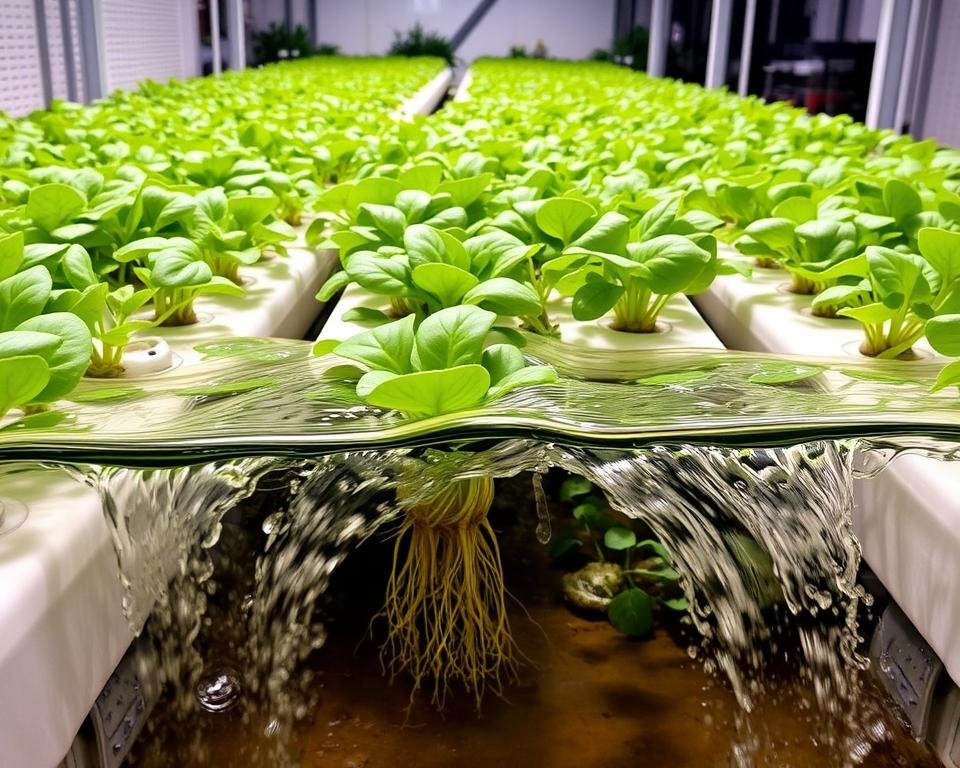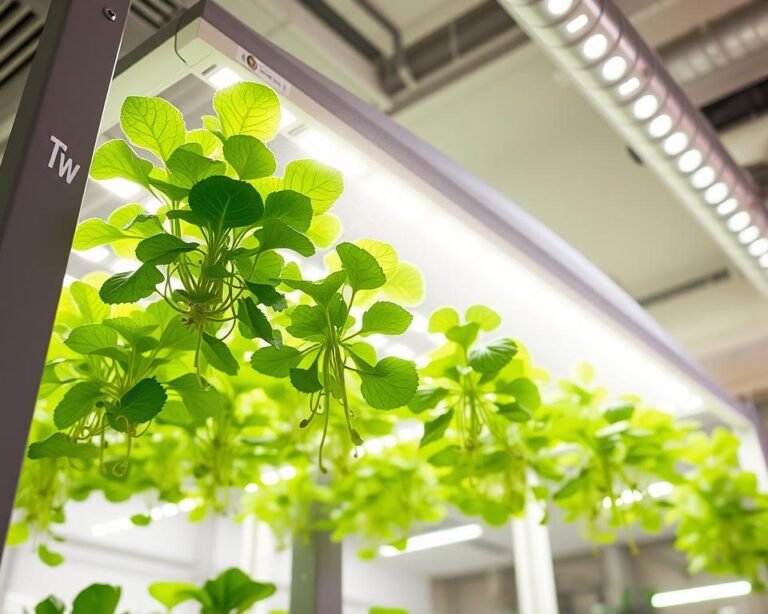Ebb & Flow System: A Powerful Hydroponic Method Explained
Growing plants has always been a passion of mine. But traditional gardening felt too limited. Then, I found the ebb & flow system in hydroponic gardening. It changed everything.
This system turns a small indoor space into a thriving garden. It produces faster and more efficiently than ever before.
The ebb and flow system is a new way to grow plants without soil. It gives plants the right nutrients and oxygen. This makes it a big deal for both hobbyists and commercial growers.
Hydroponics has become very popular, growing 20.3% from 2021 to 2028. The ebb and flow system is especially efficient. It uses up to 90% less water than traditional farming. And plants grow 30% faster.
Key Takeaways
- Ebb and flow systems provide efficient nutrient delivery
- Reduces water consumption by up to 90%
- Supports faster plant growth compared to soil farming
- Works well for various plant types
- Minimizes root disease risks
Understanding the Basics of Hydroponic Growing
Hydroponic gardening is a new way to grow plants that doesn’t use soil. It’s a part of sustainable agriculture. It lets you grow more plants in less space.
What Makes Hydroponics Different from Traditional Gardening
Hydroponics is different because it doesn’t use soil. Plants grow in water that’s full of nutrients. This way, you can control their growth better.
It uses much less water than regular farming. And plants grow faster in hydroponics.
- No soil required
- Precise nutrient control
- Faster crop production
- Water-efficient growing
The Role of Water and Nutrients in Soilless Growing
Water is very important in nutrient film technique and other hydroponic systems. The quality of your water affects your plants’ health. Most water in the U.S. has too many minerals, making it hard for plants to absorb nutrients.
Using reverse osmosis water can remove 98% of impurities. This makes it perfect for growing plants.
Types of Hydroponic Systems Available
There are many hydroponic systems to choose from. Each has its own benefits for growing plants.
- Deep Water Culture (DWC)
- Nutrient Film Technique
- Ebb and Flow Systems
- Vertical Growing Systems
“Hydroponics transforms how we think about agriculture, turning limited spaces into productive growing environments.”
Ebb & Flow System: Core Components and Structure
Knowing the main parts of an ebb & flow setup is key for good recirculating irrigation. This hydroponic system has several important parts that work together. They help make a good environment for growing plants.

- Reservoir: The tank where water and plant nutrients are stored
- Submersible Pump: Moves the nutrient solution from the reservoir to the grow tray
- Grow Tray: Where plants sit and get the nutrient solution when flooded
- Timer System: Controls when the system floods and drains
- Overflow Tube: Stops water from overflowing when flooding
Your growing medium is very important in the ebb and flow hydroponic system. Choices like rockwool, hydroton, and coconut coir help plants grow well and keep nutrients.
“The right combination of components transforms a simple hydroponic setup into a powerful growing system.” – Hydroponic Expert
When setting up your recirculating irrigation system, remember these important points:
- The reservoir should hold at least three times the volume of a full flood
- Make sure your grow tray can hold the weight of plants and solution
- Pick a growing medium that fits your plant’s needs
Understanding how these parts work together will help you make a good ebb & flow hydroponic system.
How the Flooding and Draining Cycle Works
Learning about the ebb & flow works mechanism is key to using this plant growth system well. It uses a cycle of flooding and draining to save water and help plants grow strong.

Starting your hydroponic journey means understanding how water and nutrients move through three main steps.
The Flooding Phase Explained
In the flooding phase, water full of nutrients is poured into the grow tray. This exact flooding method makes sure plants absorb all they need.
- Nutrients are spread out evenly
- Roots get enough water
- There’s good oxygen exchange
Understanding the Draining Process
The draining phase is just as important. When water goes away, roots get air. This stops plants from getting too wet and rotting.
“Control the water, control the growth” – Hydroponic Farming Wisdom
Optimal Timing for Growth Cycles
The length of each cycle depends on the plant, its growth stage, and the environment. How often you flood and drain affects water use.
| Plant Type | Flood Duration | Drain Duration |
|---|---|---|
| Leafy Greens | 15-30 minutes | 30-45 minutes |
| Herbs | 10-20 minutes | 40-60 minutes |
| Flowering Plants | 20-40 minutes | 45-90 minutes |
By getting these cycles right, you’ll make a great place for plants to grow. And you’ll use less water too.
Setting Up Your First Ebb & Flow System
Setting up an ebb & flow system for sustainable agriculture needs careful planning. This method saves water and changes how you grow plants.

First, pick a good spot for your system. Look for a place with stable temperature, enough light, and easy access for upkeep. Most hydroponic systems do well indoors.
Essential Components for Your System
- Growing tray
- Reservoir tank
- Water pump
- Timer
- Growing medium
- Nutrient solution
When putting your system together, focus on efficient water cycling. The key is consistent nutrient delivery and optimal root oxygenation.
“Hydroponics is not just a growing method, it’s a revolution in agricultural efficiency.” – Hydroponic Expert
Pump and Timer Selection
| Component | Recommendation |
|---|---|
| Pump Size | Choose a pump that moves twice the minimum gallons per hour |
| Timer Settings | 15-30 minute flood cycles recommended |
| Growing Medium | Clay pebbles or rockwool preferred |
Preparing your nutrient solution is key. Mix nutrients as the manufacturer says, keeping pH levels between 5.5-6.5 for best plant growth.
Monitoring and Maintenance
- Check water levels daily
- Monitor pH and nutrient concentration
- Clean system components regularly
- Replace nutrient solution every 1-2 weeks
By following these steps, you’ll build a strong ebb & flow system. It will grow plants well and save water, showing true sustainable agriculture.
Conclusion
Ebb and flow hydroponics is a strong answer to today’s farming problems. It goes beyond old ways of growing, offering a new path to green farming. This journey can change how you see growing food.
These systems save water, cutting losses by up to 20% and fertilizer use by 10-30%. They’re a smart choice for farming. You can grow all sorts of plants, big or small, in any place.
But, there are challenges like pH issues and equipment problems. Keeping everything in check is key. Knowing your system, keeping nutrients right, and flooding cycles consistent are crucial. Ebb and flow hydroponics leads the way in new farming tech.
Choosing this method means you’re part of a big shift toward better, greener food making. The future of farming is bright, full of new chances.







